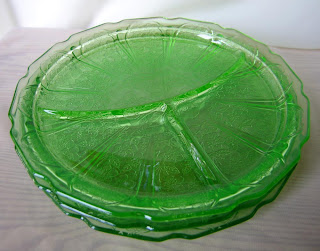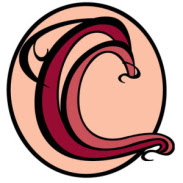1905
- Hocking Glass Company founded by Isaac Collins and EB Good
- Lancaster Carbon Company purchased
1924
- The original plant, nicknamed the Black Cat, burns down
- Plant1 built on the original plant’s site
- Controlling interest purchased -Lancaster Glass Co. (Plant 2)
- Controlling interest purchased -Standard Class Co.
1929
- 15-mold machine developed that could produce 90 pieces of glassware per minute enabling the company to offer low cost glass items and survive the Great Depression.
1931
- 50% of the General Glass Company is purchased
- General Glass acquires Turner Glass Company of Winchester, Indiana
1934
- The first one-way beer bottle is developed
1937
- Hocking Glass Company and Anchor Cap and Closure Corporation merge
- Name changes to Anchor Hocking Glass Corporation
1940’s
- Purchased Carr-Lowry Glass Company, Maryland
- Purchased Maywood Glass, west coast
1950’s
- Research and Development Center opened in Lancaster, Ohio
- Purchased Tropical Glass and Container Company, Jacksonville Florida
1959
- New facility built in San Leandro, California
1962
- New glass container plant built in Houston, Texas
- 2nd unit added to R&D, renamed the General Development Laboratory
1963
- Zanesville Mold Company in Ohio became a subsidiary of Anchor Hocking Glass
1968
- Plastics Incorporated acquired in St Paul, Minnesota
- Plastic plant built in Springdale, Ohio
1969
- Name changed to Anchor Hocking Corporation – “Glass” dropped due to product diversification
1970
- Phoenix Glass Company, Monaca, Pennsylvania purchased
- Taylor, Smith & Taylor Company, Chester, West Virginia purchased
1978
- Phoenix Glass Company destroyed by fire
1979
- Shenango China, New Castle, Pennsylvania purchased
1981
- Taylor, Smith and Taylor sold
1983
- Glass Container Division sold to Wesray Corp who used the name Anchor Glass Container Corporation for this division and maintained seven manufacturing plants and an office in Lancaster, Ohio.
1987
- Newell Corporation acquires the Anchor Hocking Corporation
- Clarksburg, West Virginia facility closed
1988
- Shenango China sold by Newell Corporation
1989
- Carr-Lowry Glass sold by Newell Corporation
2001
- Libbey makes unsuccessful attempt to purchase Anchor Hocking
2002
- Anchor Hocking sold to Global Home Products
2006
- Global Home Products and Anchor Hocking file for Chapter 11 bankruptcy
Tuesday, April 14, 2009
Monday, April 6, 2009
Thursday, April 2, 2009
EAPG The Prize Berry Bowls National Glass 1902
.jpg)
.jpg)
.jpg)
These EAPG berry bowls are in "The Prize" pattern by the National Glass Company, circa 1902. The pattern was so named because it won first prize for design in the prior year. Measuring 4” wide and 2” tall with slightly cupped rims they have a scalloped edge of alternating round and pointed tips. The design around the bowl also has an alternating round and pointed design and there is a 26 point star on the bottom. The design is very crisp, it almost feels cut, but not quite.
EAPG O’Hara Bartholdi Spooner Etch #362 c 1886


 This lovely EAPG Bartholdi Spooner with Etch #362 was made by O’Hara Glass Company of Pittsburgh and dates back to 1886. The pattern was introduced in 1886, named in honor of the sculptor of the Statue of Liberty, Frederic-Auguste Bartholdi. It measures approximately 4 7/8 inches high and has a buttons and stars design around the rim and base as well as the etch in the center.
This lovely EAPG Bartholdi Spooner with Etch #362 was made by O’Hara Glass Company of Pittsburgh and dates back to 1886. The pattern was introduced in 1886, named in honor of the sculptor of the Statue of Liberty, Frederic-Auguste Bartholdi. It measures approximately 4 7/8 inches high and has a buttons and stars design around the rim and base as well as the etch in the center.
Sunday, March 29, 2009
Cherry Blossom Green Depression Glass Jeannette
 This beautiful cup from Jeanette Glass in their Cherry Blossom pattern is a lovely example of green Depression glass and glows very brightly under a UV light. Stands a little over 2” tall. Made in Crystal, Delphite (blue) green, jadite, pink and red. c. 1930-1939
This beautiful cup from Jeanette Glass in their Cherry Blossom pattern is a lovely example of green Depression glass and glows very brightly under a UV light. Stands a little over 2” tall. Made in Crystal, Delphite (blue) green, jadite, pink and red. c. 1930-1939Cambridge Green Depression Glass Vanity Dresser Set Perfume Puff Box
This gorgeous set from Cambridge glass features two perfume bottles and a powder jar in very clear green depression glass. The perfume bottles are decorated with rings framing the body of the bottle and continuing on the base. The lids have a geometric design and are complete with ground glass stoppers which should have long glass daubers. The puff box has a rounded body on a low foot and it's lid has a matching geometric design to the perfumes. The perfumes, Cambridge pattern number #198 are 5" tall including the stopper and the powder box , #581, is 4" tall with the lid on and 4" wide.






Pink Indiana Avocado Depression Glass Open Sugar Bowl
.jpg) Indiana Glass Company Avocado Depression Glass Open Sugar Bowl This gorgeous piece of pink depression glass is Indiana's well known Avocado pattern made between 1923 and 1933. Also shown is a 8 1/2" bowl.
Indiana Glass Company Avocado Depression Glass Open Sugar Bowl This gorgeous piece of pink depression glass is Indiana's well known Avocado pattern made between 1923 and 1933. Also shown is a 8 1/2" bowl. Made in crystal, pink, green and white.
Reproduced in amethyst, blue, dark green, frosted green, frosted pink, pink, red and yellow. Values vary greatly based on the color and rarity of the piece ranging from $12 for a crystal bowl to $1100 for a green pitcher!
Reproduced in amethyst, blue, dark green, frosted green, frosted pink, pink, red and yellow. Values vary greatly based on the color and rarity of the piece ranging from $12 for a crystal bowl to $1100 for a green pitcher!
.jpg)

.jpg)
Wednesday, March 25, 2009
Anchor Hocking Glass Company - A Brief History
The company we now call Anchor Hocking started out as Hocking Glass Company in 1905. In the 1920s, Hocking purchased the Lancaster Glass Company and the Standard Glass Manufacturing Company. During the Depression Era, the Hocking Glass Company began production of a number of well-known patterns including Cameo, Block Optic, Miss America, Mayfair, Manhattan and others. The name changed to Anchor Hocking Glass Co. in 1937 when Hocking Glass merged with Anchor Cap and Closure Corporation and became the leader in selling both machine-made glassware and bottles.
In the mid-century era, Anchor Hocking continued to develop and produce new patterns and colors. Their most well known color commonly referred to as Ruby Red but called Royal Ruby by Anchor Hocking was patented by the company in 1938 and produced through the 1960’s. A few of the patterns from this period are Bubble, Charm, Sandwich, Park Avenue, Early American Press Cut, Fire-King and many others. Some of these patterns remained in production or were reissued by AH into the 1960’s and 70’s and beyond.
Anchor Hocking Company is still in existence today with Plant No. 1, Lancaster, Ohio, based on the site of the original plant, the "Black Cat," which was destroyed by fire in 1924. The company is a leading producer of consumer glass products with distribution around the world.
In the mid-century era, Anchor Hocking continued to develop and produce new patterns and colors. Their most well known color commonly referred to as Ruby Red but called Royal Ruby by Anchor Hocking was patented by the company in 1938 and produced through the 1960’s. A few of the patterns from this period are Bubble, Charm, Sandwich, Park Avenue, Early American Press Cut, Fire-King and many others. Some of these patterns remained in production or were reissued by AH into the 1960’s and 70’s and beyond.
Anchor Hocking Company is still in existence today with Plant No. 1, Lancaster, Ohio, based on the site of the original plant, the "Black Cat," which was destroyed by fire in 1924. The company is a leading producer of consumer glass products with distribution around the world.
Anchor Hocking Royal Ruby Red

Royal Ruby Red Cup & Saucer Anchor Hocking Glass Company 1940
Royal Ruby Red Coronation Berry Bowls

Anchor Hocking Glass Company Coronation - also called Banded Fine Rib, and Saxon
c. 1936-1940
Colors - crystal, green, pink, Royal Ruby
Shown is the 8" master berry bowl and the 4.25" berry bowl
Labels:
"fine rib",
banded,
coronation,
crystal,
glass,
green,
hocking,
panelled,
pink,
red,
rib,
ribs,
royal,
ruby,
saxon,
starburst
Subscribe to:
Posts (Atom)


.jpg)
.jpg)










